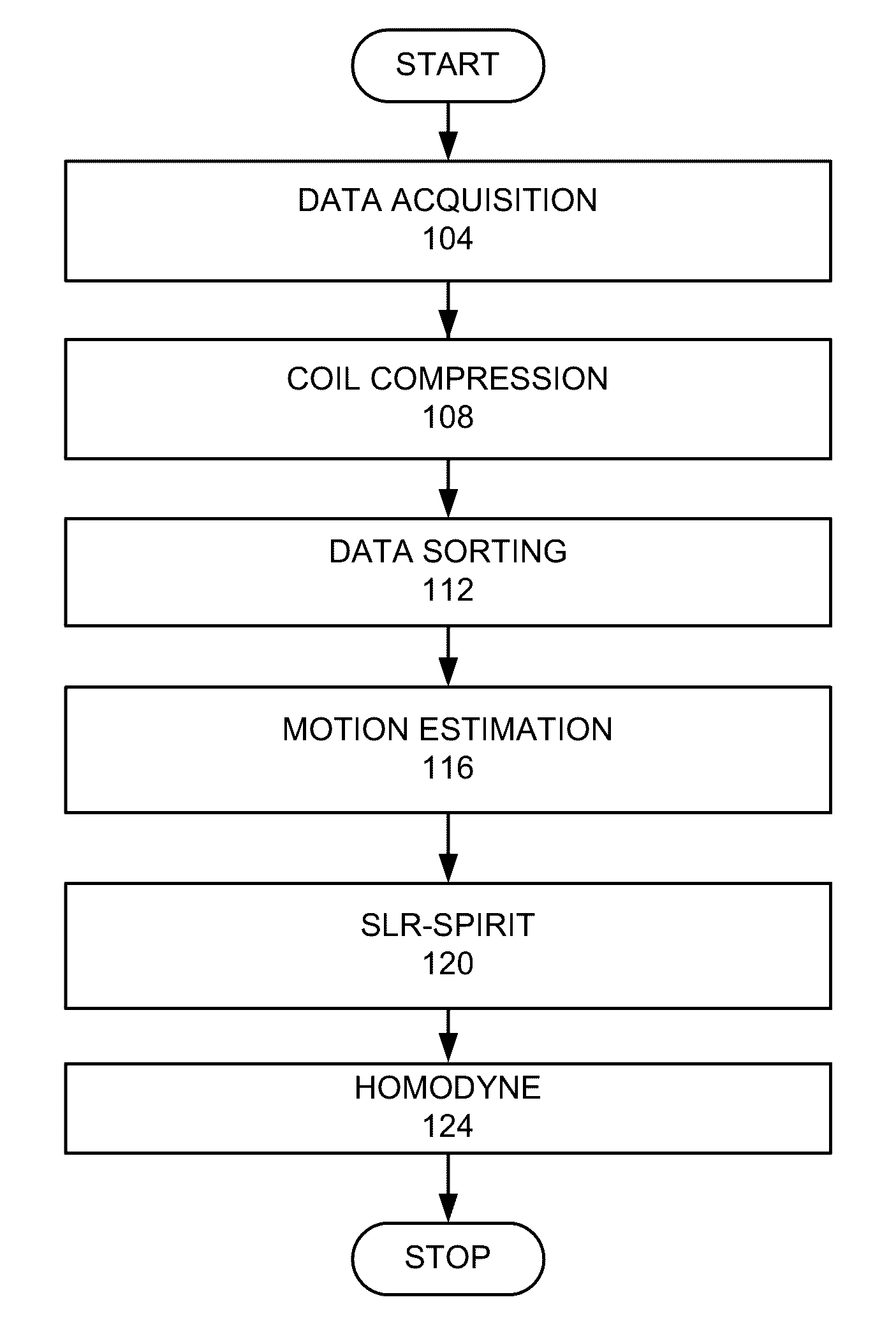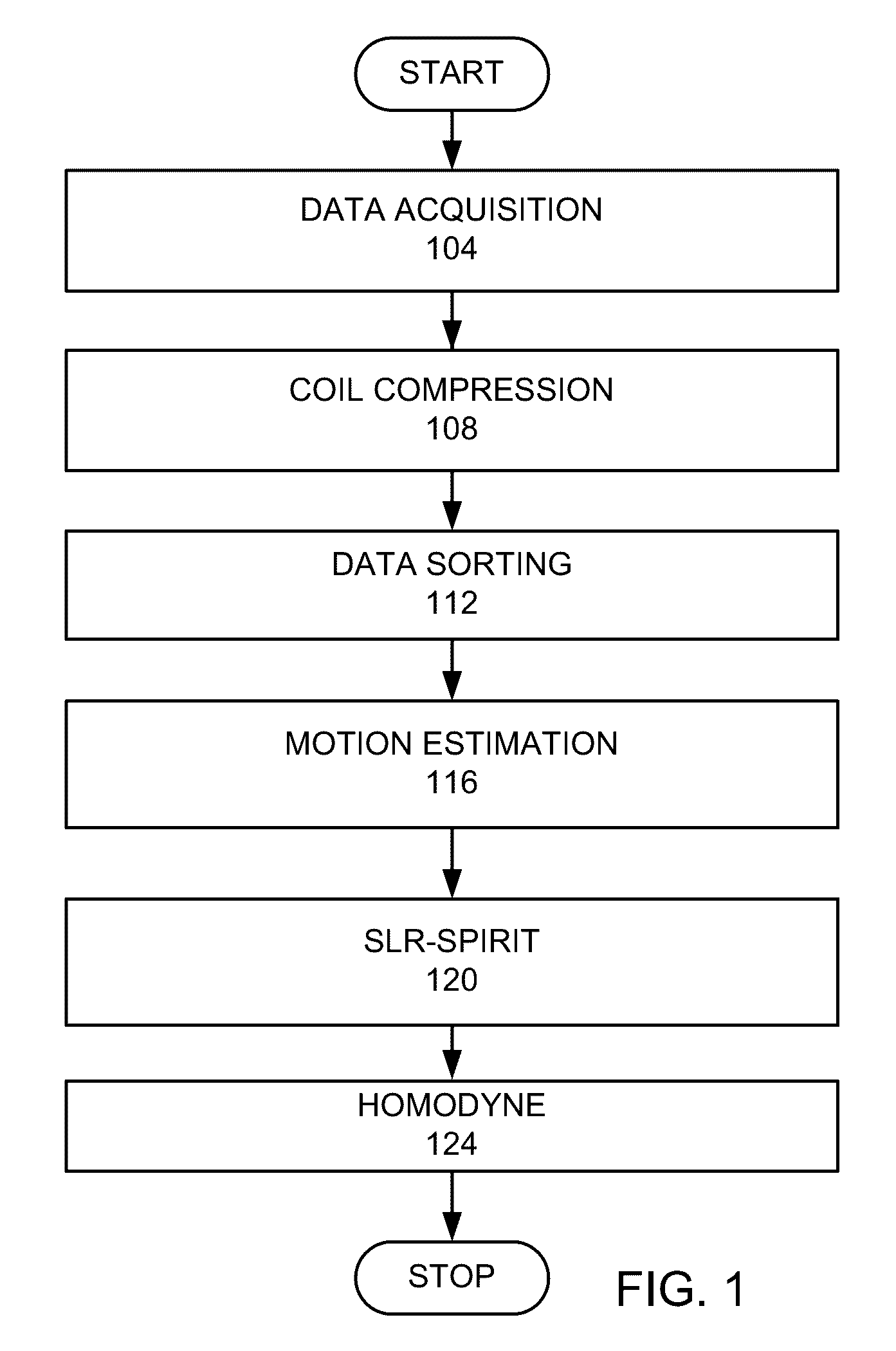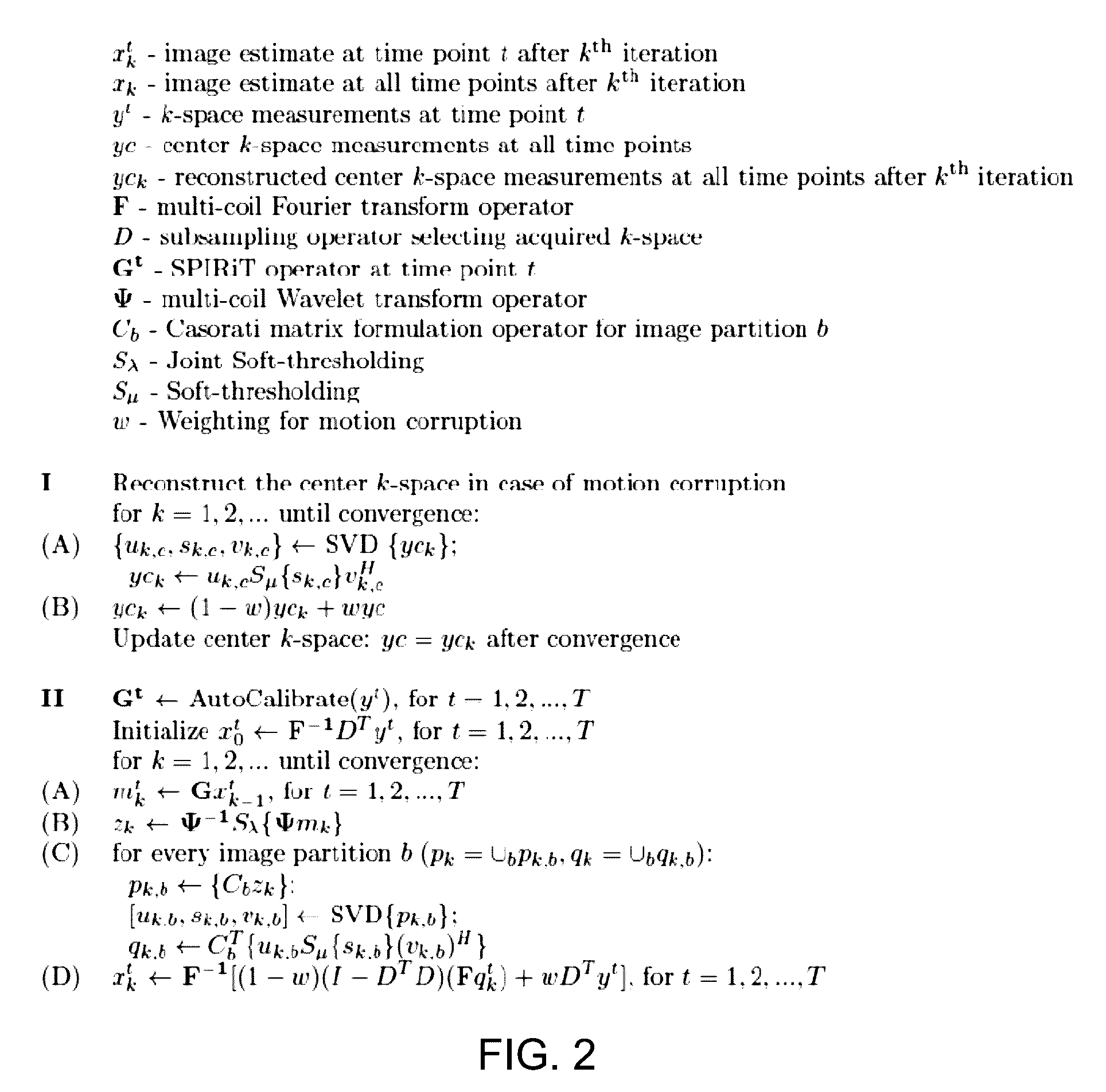Dynamic contrast enhanced magnetic resonance imaging with high spatial-temporal resolution
a magnetic resonance imaging and spatial-temporal resolution technology, applied in the field of magnetic resonance imaging (mri), can solve problems such as unsatisfactory imaging artifacts
- Summary
- Abstract
- Description
- Claims
- Application Information
AI Technical Summary
Benefits of technology
Problems solved by technology
Method used
Image
Examples
Embodiment Construction
[0019]Dynamic Contrast Enhanced (DCE) MRI is commonly used in clinical abdominal and pelvic examinations for abdominal vessel evaluation and lesion detection and characterization. To better visualize fine abdominal vessels and small lesions, a high spatial resolution is required. On the other hand, a high temporal resolution is necessary to capture the contrast uptakes of abdominal organs and blood vessels, which usually last for only a few minutes or less. However, due to the large volumetric coverage needed in abdominal DCE MRI, often a tradeoff between spatial and temporal resolution has to be made. Abdominal DCE MRI is further challenging for pediatric patients: small anatomical structures in pediatric patients require an even higher spatial resolution and rapid hemodynamics requires a finer temporal resolution.
[0020]Respiratory motion is another major concern in abdominal DCE MRI. Acquisition with breath-holding is one possible approach. However, very few patients can hold thei...
PUM
 Login to View More
Login to View More Abstract
Description
Claims
Application Information
 Login to View More
Login to View More - R&D
- Intellectual Property
- Life Sciences
- Materials
- Tech Scout
- Unparalleled Data Quality
- Higher Quality Content
- 60% Fewer Hallucinations
Browse by: Latest US Patents, China's latest patents, Technical Efficacy Thesaurus, Application Domain, Technology Topic, Popular Technical Reports.
© 2025 PatSnap. All rights reserved.Legal|Privacy policy|Modern Slavery Act Transparency Statement|Sitemap|About US| Contact US: help@patsnap.com



